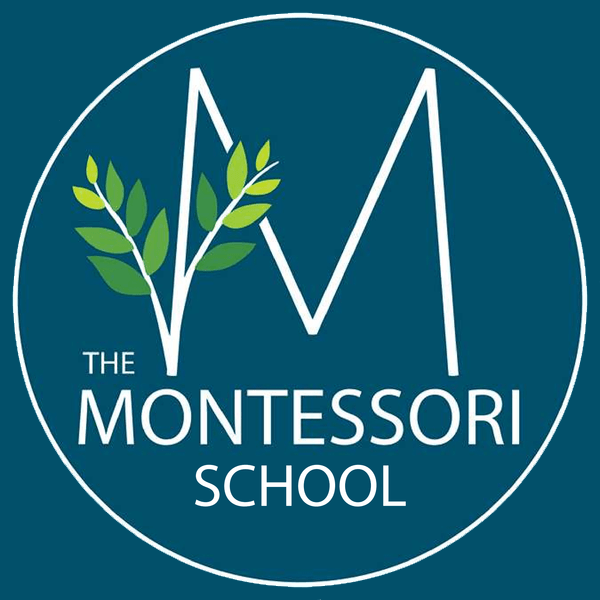First steps in educational agility


"As we progressed through the tail end of the pandemic, our leadership team worked on Value Stream mapping all of our events, processes, and school calendar to ensure that we are all still aligned on the "why" behind everything we do", according to Todd Covert, Head of School.
In a time when pressures and burnout spread across the educational landscape, the Montessori School of the Berkshires (MSB) stands as a testament to the transformative potential of Educational Agility. This case study unfolds in a setting where the demand for a nimble, responsive approach to leadership and communications has become not just a preference but a necessity. MSB, a beacon of innovative educational practices for learners 15 months through 8th grade, found itself grappling with the complexities of modern education: coordinating a diverse array of initiatives ranging from curriculum development to the integration of extracurricular activities, all while striving to uphold the essence of Montessori education.
The leadership at MSB, recognizing the urgency of these challenges, turned to the Lean-Agile Leadership model offered through L-EAF's Educational Agility framework combined with basic WorkFLOW, a teaming and communications methodology. "I was introduced to the Lean Agile Leadership Model during the pandemic. At a time when everyone, especially school leaders were navigating through the fog, this approach helped us to organize our thoughts and processes, and begin to find and try ways of moving through it all.", explains Todd Covert, Head of School for MSB.
This decision was propelled by a visionary goal: to revolutionize the school's operational efficiency, internal and external communication, and, ultimately, its educational outcomes. The objectives were ambitious yet clear—streamline communication among the staff and between the staff and the school board, focus on prioritizing initiatives and tasks to ensure efficient resource and capacity allocations, and optimize outcomes to achieve financial stability and heightened satisfaction among faculty, staff, and students.
The transformative journey began with a micro-immersive journey in Agile Leadership for the school head and workshops for leaders and staff. School leadership, alongside staff members, delved into the principles of adaptability, iterative progress, and collaboration. This foundational phase was crucial, setting the stage for a school-wide embrace of agile methodologies. The introduction of lean-agile methodologies and tools, particularly L-EAF's WorkFLOW method and Kanban Zone for process and work visualization, marked a significant turning point. These tools were meticulously tailored to various teams within the school, including faculty, administration, and board members, providing a visual and interactive platform for managing tasks, projects, and strategic initiatives. This innovative approach promised to streamline communications and operations, breaking down traditional barriers to efficiency and clarity.
Regular Collaboration Practices were instituted, including planning events, risk management, demonstrations, and retrospectives. These practices were not mere formalities but served as the heartbeat of the school's new agile culture, ensuring a continuous flow of work, focused collaborations, and reflections on the process, "As a Head of School, my weekly meetings with each member of our admin team shifted to 2-30 minute standups where they each walk me through their workflows, which allows me to support them and help remove any obstacles that might be impeding their progress." Furthermore, the alignment between the school board and staff through a unified work management system was pivotal. This strategic alignment ensured that every member of the MSB community was not just working hard but working together towards common goals, harmonizing day-to-day tactical work with overarching strategic objectives.
The execution of this bold strategy unfolded over a twelve-week period. The time was dedicated to introducing agile tools and training, setting up WorkFLOW boards for different teams, and familiarizing the entire school community with the new approach. Teams participated in an introductory workshop and experienced micro-immersive coaching with skill training, as needed Coaching saw the implementation of agile practices in daily operations, marked by the initiation of regular planning, refinement, risk management, and demonstration events. Lastly, a comprehensive retrospective session to identify small improvements in the team's agility practice.
The outcomes of this audacious experiment in Educational Agility were nothing short of remarkable. Improved Communication emerged as a significant achievement, with the visual nature of Kanban boards facilitating easy tracking of tasks and responsibilities. This clarity in communication led to fewer misunderstandings and a more cohesive working environment. Enhanced Focus was another notable outcome, with staff members now equipped to prioritize tasks more effectively, leading to a better allocation of time and resources. The school witnessed a noticeable decrease in project overruns and delays, a testament to the efficacy of the agile approach.
Perhaps most importantly, Optimized Educational Outcomes were observed across the board, "As we progressed through the tail end of the pandemic, our leadership team worked on Value Stream mapping all of our events, processes, and school calendar to ensure that we are all still aligned on the "why" behind everything we do", according to Todd. With better-aligned teams and clearer communication channels, the school saw improvements in educational delivery. Teachers reported feeling more supported, allowing them to dedicate their energies to teaching and fostering higher student engagement and satisfaction. This holistic improvement in the school's operational and educational ecosystem underscored the power of Educational Agility in creating more adaptive, responsive, and learner-centric educational environments.
The MSB case study, therefore, serves as a compelling model for other educational institutions navigating the challenges of modern education. By embracing the principles of Educational Agility, schools can not only address current challenges but also lay a solid foundation for future success in an ever-evolving educational landscape, "From the Board of Trustees perspective, we are now using this Workflow mapping our strategies down to our tactics. This process allows me to work directly with our Board of Trustees chair in prioritizing, refining, and operationalizing our goals to tactics from both our Board of Trustees work and our admin team work.". This narrative, enriched with the successes and lessons from MSB's journey, offers a blueprint for educational leaders seeking to transform their institutions into vibrant, agile learning communities where every student thrives, educators feel empowered, and the pursuit of knowledge is a dynamic, lifelong journey.
The leadership at MSB, recognizing the urgency of these challenges, turned to the Lean-Agile Leadership model offered through L-EAF's Educational Agility framework combined with basic WorkFLOW, a teaming and communications methodology. "I was introduced to the Lean Agile Leadership Model during the pandemic. At a time when everyone, especially school leaders were navigating through the fog, this approach helped us to organize our thoughts and processes, and begin to find and try ways of moving through it all.", explains Todd Covert, Head of School for MSB.
This decision was propelled by a visionary goal: to revolutionize the school's operational efficiency, internal and external communication, and, ultimately, its educational outcomes. The objectives were ambitious yet clear—streamline communication among the staff and between the staff and the school board, focus on prioritizing initiatives and tasks to ensure efficient resource and capacity allocations, and optimize outcomes to achieve financial stability and heightened satisfaction among faculty, staff, and students.
The transformative journey began with a micro-immersive journey in Agile Leadership for the school head and workshops for leaders and staff. School leadership, alongside staff members, delved into the principles of adaptability, iterative progress, and collaboration. This foundational phase was crucial, setting the stage for a school-wide embrace of agile methodologies. The introduction of lean-agile methodologies and tools, particularly L-EAF's WorkFLOW method and Kanban Zone for process and work visualization, marked a significant turning point. These tools were meticulously tailored to various teams within the school, including faculty, administration, and board members, providing a visual and interactive platform for managing tasks, projects, and strategic initiatives. This innovative approach promised to streamline communications and operations, breaking down traditional barriers to efficiency and clarity.
Regular Collaboration Practices were instituted, including planning events, risk management, demonstrations, and retrospectives. These practices were not mere formalities but served as the heartbeat of the school's new agile culture, ensuring a continuous flow of work, focused collaborations, and reflections on the process, "As a Head of School, my weekly meetings with each member of our admin team shifted to 2-30 minute standups where they each walk me through their workflows, which allows me to support them and help remove any obstacles that might be impeding their progress." Furthermore, the alignment between the school board and staff through a unified work management system was pivotal. This strategic alignment ensured that every member of the MSB community was not just working hard but working together towards common goals, harmonizing day-to-day tactical work with overarching strategic objectives.
The execution of this bold strategy unfolded over a twelve-week period. The time was dedicated to introducing agile tools and training, setting up WorkFLOW boards for different teams, and familiarizing the entire school community with the new approach. Teams participated in an introductory workshop and experienced micro-immersive coaching with skill training, as needed Coaching saw the implementation of agile practices in daily operations, marked by the initiation of regular planning, refinement, risk management, and demonstration events. Lastly, a comprehensive retrospective session to identify small improvements in the team's agility practice.
The outcomes of this audacious experiment in Educational Agility were nothing short of remarkable. Improved Communication emerged as a significant achievement, with the visual nature of Kanban boards facilitating easy tracking of tasks and responsibilities. This clarity in communication led to fewer misunderstandings and a more cohesive working environment. Enhanced Focus was another notable outcome, with staff members now equipped to prioritize tasks more effectively, leading to a better allocation of time and resources. The school witnessed a noticeable decrease in project overruns and delays, a testament to the efficacy of the agile approach.
Perhaps most importantly, Optimized Educational Outcomes were observed across the board, "As we progressed through the tail end of the pandemic, our leadership team worked on Value Stream mapping all of our events, processes, and school calendar to ensure that we are all still aligned on the "why" behind everything we do", according to Todd. With better-aligned teams and clearer communication channels, the school saw improvements in educational delivery. Teachers reported feeling more supported, allowing them to dedicate their energies to teaching and fostering higher student engagement and satisfaction. This holistic improvement in the school's operational and educational ecosystem underscored the power of Educational Agility in creating more adaptive, responsive, and learner-centric educational environments.
The MSB case study, therefore, serves as a compelling model for other educational institutions navigating the challenges of modern education. By embracing the principles of Educational Agility, schools can not only address current challenges but also lay a solid foundation for future success in an ever-evolving educational landscape, "From the Board of Trustees perspective, we are now using this Workflow mapping our strategies down to our tactics. This process allows me to work directly with our Board of Trustees chair in prioritizing, refining, and operationalizing our goals to tactics from both our Board of Trustees work and our admin team work.". This narrative, enriched with the successes and lessons from MSB's journey, offers a blueprint for educational leaders seeking to transform their institutions into vibrant, agile learning communities where every student thrives, educators feel empowered, and the pursuit of knowledge is a dynamic, lifelong journey.

Alignment from the Board down to Adiministration

Moveing from strategy to tactic with ease

Improved communication and reduced stress

